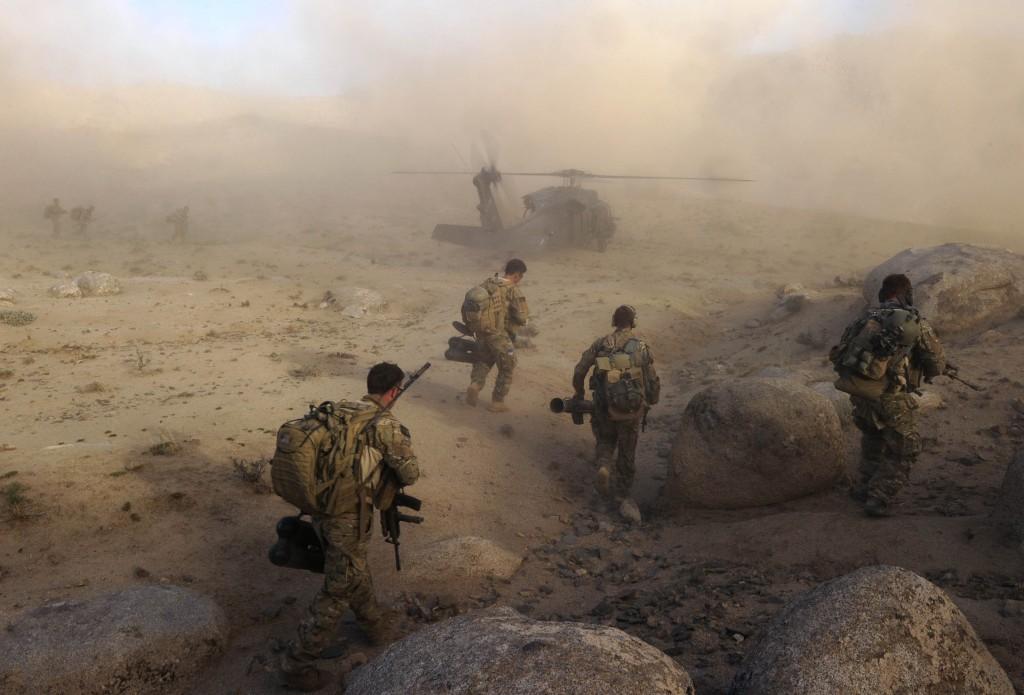Unsurprisingly, it’s the big defence procurement decisions that make the headlines—whether it’s the choice about the future submarine or last week’s decision to acquire 58 Joint Strike Fighters (JSF). As the Australian Defence Force (ADF) enters into the post-Afghanistan period another issue deserves equal attention: the future of the land force that bore the brunt of the operational burden for over a decade.
One critical question in this context is the future utility of special operations forces (SOF), which became the ‘capability of choice’ for Australian governments in operations such as Iraq and Afghanistan. Their ability to conduct highly sensitive missions, to operate in complex terrain, and to do so at short notice made them an attractive military instrument. As a result, the Special Operations Command (SOCOMD) received more generous funding, grew in personnel, and gained greater prominence within the ADF’s institutional structure. But with the drawdown of global and regional deployments it’s important to ask what to do next with the special operations capability.
To inform government decisions on that issue, ASPI today released its report (PDF) A versatile force—The future of Australia’s special operations capability (my co-authors are ASPI colleagues Andrew Davies and Peter Jennings). The main message is that Defence should consolidate and further develop the SOF’s capability to act as part of a joint force. That’s because SOF will continue to provide Government with a high-value military asset—useable and ready military forces. Such an asset is particularly valuable in an era where regional defence engagement and clandestine operations are likely to become more important.
Any temptation to reduce the special operations capability as a cost-cutting measure should be resisted. Nor should growth be at the expense of the regular Army because regular Army capabilities complement those of the SOF; such forces work best as the top of a ‘pyramid’ of land forces that provides the personnel base and many of the required enabling force elements.
The report makes a number of practical policy recommendations on how to strengthen the capability:
- SOCOMD should be provided with an ongoing funding line for specialised, small-scale equipment projects. Given the specialised nature of the capability, SOCOMD itself is best placed to make small-scale investment decisions, to guide experimental work on developing future capability and to respond quickly to changing operational requirements. The appropriate funding should be in the order of $20–30 million per year. For larger projects, SOCOMD should compete with other proposals in the well-established defence capability process. SOCOMD needs a joint champion at the committee table to ensure that all of the enabling elements required for special operations, such as airlift, strategic communications and fire support, are in place when needed.
- We also think there’s a good case for a Capability Manager for Joint Capabilities to support SOF capability development. In our view, the Vice Chief of the Defence Force would be the appropriate choice.
- Government should seek to establish a legislative framework for the conduct and oversight of clandestine operations. Such operations share similarities with sensitive intelligence operations, and can involve military personnel in ways other than uniformed and declared military operations. In an increasingly murky international environment involving well-resourced and dangerous non-state actors, clandestine operations could become a more important task for Australia’s SOF. If so, it’ll be important to develop an unambiguous legislative framework for such operations.
- SOF have a vital role to play in Defence’s global and regional engagement strategy. Generally, SOF foreign engagement should prioritise Australia’s near region: that’s where our security interests are most closely engaged, and proximity would make it easier for other ADF elements to provide support for operations if required.
- To do so, Defence could consider establishing SOF liaison elements in selected Australian embassies, providing a permanent SOCOMD representation in key partner countries. In Southeast Asia, Defence should consider such elements in Indonesia, Malaysia, Singapore and the Philippines. In the South Pacific, SOF cooperation with Papua New Guinea and Fiji should be made a priority.
- There’s merit in thinking about the establishment of a regional SOF training centre. Defence could initiate this development and offer to host such a school in Australia to facilitate cooperation and coordination among regional SOF.
- Beyond regional engagement, maintaining and strengthening SOF cooperation with our US ally is vital for activities in the Asia-Pacific theatre and further abroad. The latest US Quadrennial Defense Review report shows that the US plans a significant increase in the numbers of its own special force personnel at a time when most other parts of its armed forces are being cut. Steps to strengthen the relationship could include intensifying bilateral training activities as well as establishing a small permanent SOF presence at two more US regional combatant commands. While an agreement was recently signed for a SOCOMD liaison post at US Pacific Command, similar arrangements could be considered with US Central Command and US Africa Command to facilitate Australian special operations in the Middle East and Africa.
Benjamin Schreer is a senior analyst at ASPI. Image courtesy of Department of Defence.
